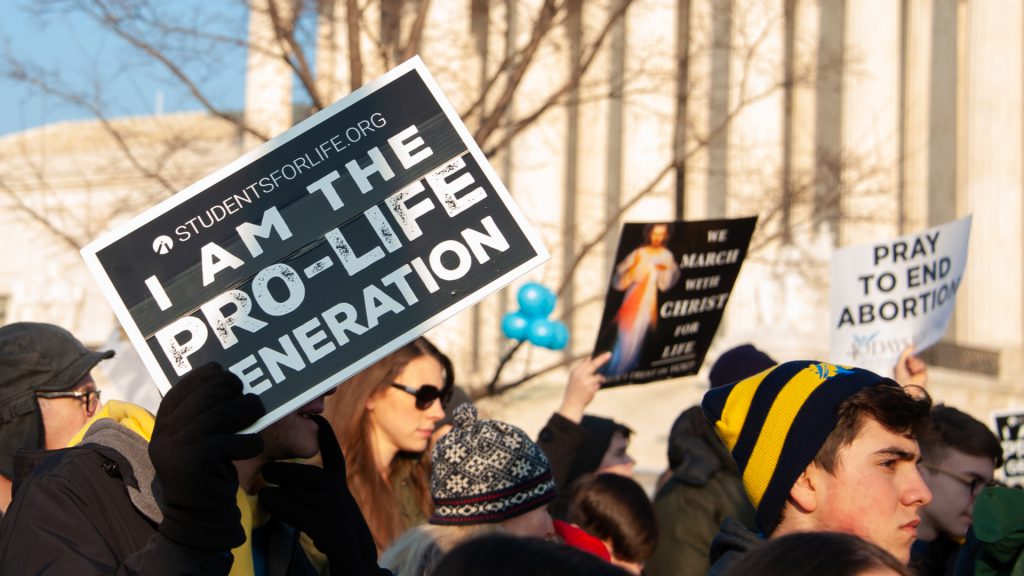
Published July 4, 2020
My high school wrestling coach (of blessed memory) had one response whenever wrestlers would complain about injuries, bad calls from referees, or even cheating opponents: “None of it matters. Find a way to win.”
This is good advice for those of us—lawyers, politicians, doctors, concerned citizens—who have devoted our lives to building a legal and cultural landscape in which the intrinsic dignity of every human being, born and unborn, is respected and protected. Yes, the Court’s decision in June Medical Services v. Russo, which struck down a Louisiana law requiring abortion providers to have admitting privileges at a local hospital, was a crushing disappointment. Yes, eminent scholars and commentators have powerfully critiqued the legal reasoning in Chief Justice Roberts’s concurring opinion, especially regarding principles of stare decisis. And yes, it seems that state lawmakers will need to refine their previous approach to protecting the health and safety of women.
But now is not the moment to dwell on anger or disappointment. Now is the time to get back on our feet and return to the work of building a civilization of love, radical hospitality, and legal protection for unborn children and their mothers. We have no choice but to continue to fight for the lives and dignity of these most vulnerable members of the human family. Quitting is not an option. So, the question before us is this: What in the Chief Justice’s concurrence (which controls as precedent for the lower courts) points a way forward for the legal effort to build a culture of life? A careful reading of his concurrence reveals several points to consider.
First, Roberts acknowledges that Whole Woman’s Health v. Hellerstedt (2016), which struck down Texas’s admitting privileges requirement (and clinic regulations), was wrongly decided. Thus, as Justice Kavanaugh points out in dissent, there is currently a majority of five Justices who (correctly) share this view. I would add that given all the publicly available information, it is impossible to imagine that Roberts and the four dissenters in June regard Roe v. Wade and Planned Parenthood v. Casey as correctly decided in the first instance. Indeed, in his concurrence he notes that both parties to the matter agreed that Casey is the correct standard to apply and neither side asked that it be reconsidered; he does not here endorse or reaffirm Casey as a precedent. However, it is clear that going forward, in order to persuade Roberts to overrule these cases, restore justice, and repair the rule of law, pro-life litigants will have to muster arguments responsive to his view that the prudential doctrine of stare decisis requires additional reasons to do so concerning these precedents’ “administrability, [their] fit with subsequent factual and legal developments, and the reliance interests that [they] have engendered.” The good news is that this case can be readily made. The Roe/Casey jurisprudence has never provided a stable, coherent, or predictable legal framework for the political branches; it is built on outdated and dubious factual predicates; it has been retheorized on multiple occasions by various Justices, thus diluting its precedential authority; and there is powerful evidence available that women have not, in fact, structured their lives around the freedom to choose abortion, nor does their flourishing depend on it.
Second, in his concurrence, Roberts rejects the open-ended rule announced by Justice Breyer in Hellerstedt (and embraced again by Justice Breyer’s opinion for the four-justice plurality here) that empowers the Court to determine the constitutionality of abortion health and safety regulations by simply balancing, without deference to the political branches, the challenged law’s “benefits” versus its “burdens.” He uses pointed language to suggest that this cost-benefit analysis requires Justices and judges to compare incommensurable goods such as autonomy and self-determination with the state’s interest in protecting unborn human life. This kind of balancing is for the political branches of government, not the courts. The Chief Justice argues (quoting the late Justice Scalia) that this is impossible for judges to do and would lead to the “unanalyzed exercise of judicial will.”
This observation is extremely important, because the right to abortion in Roe and Casey emerged from precisely the kind of analysis that Roberts here disclaims. That is, Justice Blackmun in Roe and later the three-Justice plurality in Casey concluded that there is a constitutional right to abortion because they deemed the burdens of unwanted pregnancy and parenthood on women to be weightier than the state’s interests in the life of the unborn. Thus, American abortion jurisprudence is rooted in a conceptual foundation that Roberts believes to be lawless and corrupt.
In this way, Roberts nullifies the rule announced in Hellerstedt and replaces it with what he takes to be the correct legal framework prescribed by Casey, which begins with an easy-to-meet threshold question for the state: namely, whether it is pursuing a legitimate purpose via rational means. Roberts, in another departure from Hellerstedt, likewise affirms that states have wide latitude to legislate on abortion (as on other topics), even in the face of disagreement among scientific and medical experts. Once this low bar for “rational basis” is met, the remaining question is whether the abortion regulation in question constitutes a “substantial obstacle” for women seeking an abortion prior to viability. The Chief Justice appears to regard this as a factual question for the trial court, to which he appears inclined to strongly defer. Pro-life litigants must attend carefully to this portion of the concurrence, as it underscores the importance of building a robust factual record at trial both to justify the law in question and to rebut the claim of “substantial obstacle.”
It is worth noting, however, that under the new standard articulated by the Chief Justice, the state need not persuade the trial court that its actions are supported by uncontroverted scientific and medical evidence; they need only be rational, supported by credible, even if disputed evidence. Chief Justice Roberts does not explain what kinds of state interests, if any, might be sufficient to justify a substantial obstacle to pre-viability abortion, though he notes that the Court is not to apply the nearly insuperable standard of “strict scrutiny,” as prescribed by Roe. There are many state laws now on the books to explore this question going forward.
June Medical Services was a grave disappointment and a missed opportunity. But Chief Justice Roberts’s concurrence—the controlling opinion for purposes of precedent—leaves pro-life litigants on a better jurisprudential footing than before. In fact, just this week, the Supreme Court granted certiorari to my home state of Indiana and vacated and remanded for reconsideration two cases in which lower courts had struck down laws requiring parental notice and an ultrasound to be performed eighteen hours prior to obtaining an abortion. There is good reason to believe that these laws will fare better under the new standard articulated by Roberts in June.
Most important, June is a roadmap for tailoring arguments to the new swing vote on abortion, Chief Justice Roberts. It is certainly tempting to give up because there is still so far to go. But in the face of setbacks in the struggle for the equal protection of the law for every member of the human family, born and unborn, we must remind ourselves that none of it matters. We must find a way to win.
O. Carter Snead is the Director of the de Nicola Center for Ethics and Culture, Professor of Law, and Concurrent Professor of Political Science at the University of Notre Dame. He is author of the forthcoming What It Means to be Human: The Case for the Body in Public Bioethics.








